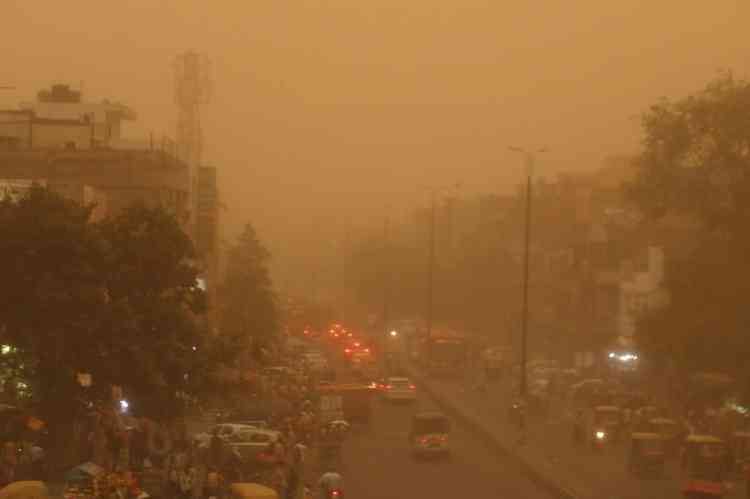Mumbai, Ahmedabad witnessing 3rd successive dust storm in one month
A third successive dust storm in the past one month -- this time highly widespread but not intense -- has emerged and engulfed the entire Arabian sea with dust, an air quality researcher scientist said on Saturday.

New Delhi, Feb 26 (IANS) A third successive dust storm in the past one month -- this time highly widespread but not intense -- has emerged and engulfed the entire Arabian sea with dust, an air quality researcher scientist said on Saturday.
As is evident from satellite imagery since past two days, there are slow but consistent intrusion owing to favourable winds and a push due to the westerly disturbance -- the same that brought hailstorm in NW India, including parts of Delhi -- has marked the entry of huge dust cloud with low density near Surat coast.
This has prompted the Air Quality Index (AQI) of Ahmedabad and surrounding areas right up to Maharashtra coast plummet to a very poor category.
"The impact is felt in Mumbai for two days, but the relatively less AQI of Mumbai turned from satisfactory to poor since Friday. It is predicted that the same dust cloud will further intensify with the clouds of Afghanistan and the upper edge of the Thar region of Pakistan and will further deteriorate the AQI for places along the Mumbai - Ahmedabad belt," said Gufran Beig, founder director of SAFAR.
However, due to warmer local conditions, it is likely to subside by Monday, he said.
SAFAR, the System of Air Quality and Weather Forecasting And Research is part of the Indian Institute of Tropical Meteorology (IITM), Pune under the Ministry of Earth Science.
As per SAFAR data, on Saturday, Ahmedabad had PM10 concentration at 225 (moderate) while PM2.5 levels were at 120 (poor).
For Mumbai, PM10 was 231 and PM2.5 was 125.
Explaining why Delhi and other parts of NW India received hailstorm and thunderstorm while Ahmedabad and Mumbai got dust storm due to the same Western Disturbance (WD), Beig said: "The wind direction is always towards Mumbai-Ahmedabad corridor whenever there is WD. It brings huge moisture in the northern part of India but nothing in south west India, except fast upper air winds, which are otherwise slow. This high winds pushes dust in that area."
Earlier, in the first week of February, for three days in a row, Mumbai had witnessed very high pollution levels -- with Air quality Index mostly above 300 with some places recording an AQI of even 400 plus.
This was because of the two back-to-back dust storms that induced worst air quality.


 IANS
IANS 








